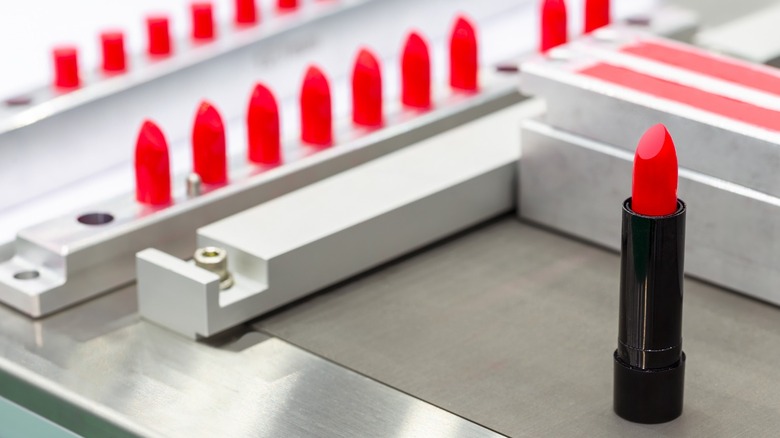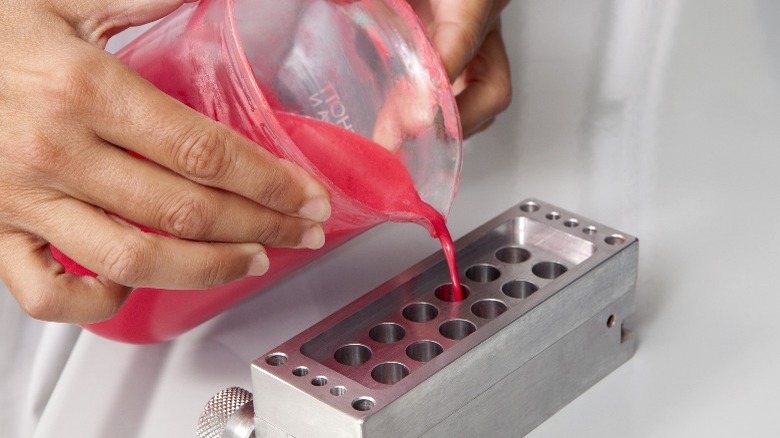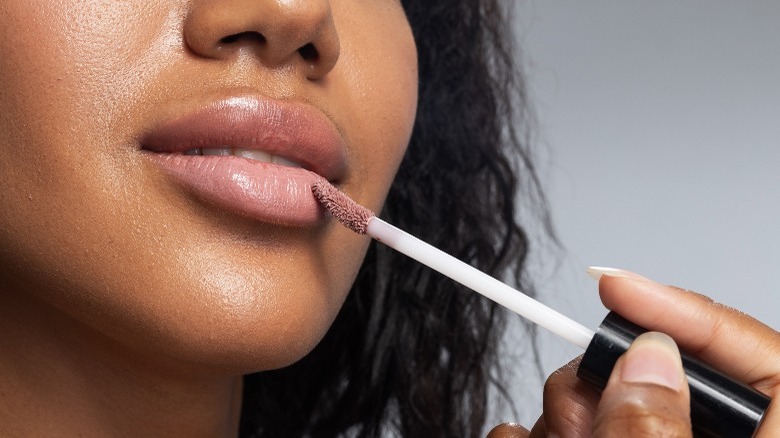So, What's The Deal With Microplastics In Makeup?
As you might have heard by now, microplastics are everywhere, and our makeup products are no exception. While research studying the frequency of microplastics in makeup appears to be sparse, one study conducted by Greenpeace Italy and cited by The Plastic Soup Foundation found that 79% of 672 makeup products tested contained microplastics, which still feels shocking. Several categories of makeup products were also more impacted than others: Mascara contained the most amount of microplastics, followed by lip glosses, foundations, and then highlighters. When it comes to our cosmetics at large, extensive research by Plastic Soup Foundation also found that, after testing thousands of cosmetic products from some of the biggest brands in the world, 87% of them contained microplastics (via Cosmetics Business).
Microplastics can be intentionally added to cosmetics, including makeup, for various reasons, including to enhance the performance of the product. When microplastics are added to products on purpose, they're called primary microplastics. According to the National Oceanic and Atmospheric Administration, microplastics are defined as minuscule plastic particles less than 5 millimeters long — but some microplastics are so small that one would even need a microscope to see them. The definition of microplastics is variable and changing though; some organizations, such as The Plastic Soup Foundation, would categorize any synthetic polymers, including silicones, as potentially problematic microplastics, depending on their toxicity, how easily they break down, and if they bioaccumulate in aquatic wildlife, among other factors.
Microplastics in makeup can cause harm
Microplastics in makeup pose a risk to the environment's health. For example, dimethicone is a common ingredient in makeup and is potentially very hazardous. The silicone-based, synthetic polymer is often added to foundation primers as a smoothing agent, allowing the foundation to "stick" to the face more readily. Dimethicone is considered safe for humans, but not for aquatic wildlife: It does not biodegrade and is expected to be a toxin to the environment, according to the Environmental Working Group.
While the effects of microplastics on human health are still being researched, the toll of microplastics on the environment is well-documented. Microplastics can easily be mistaken for food by aquatic wildlife, causing fish and other animals to ingest the plastic, potentially harming or killing them. Microplastics are also reliable vectors for other pollutants, where toxic substances might cling to the plastic. When a fish eats microplastic particles laden with toxic chemicals, and are then eaten by another animal, the larger food chain is exposed to the chemicals as well.
Addressing microplastics in makeup
Where the beauty industry is moving toward more sustainable, nontoxic modes of manufacturing and formulation, microplastics in cosmetics have continued to be a major concern, despite some legislation attempting to address them. For example, plastic exfoliant beads were outlawed in cosmetics and other care products, such as toothpaste, as part of the Microbead-Free Waters Act of 2015. While the European Union adopted a ban on microbeads soon after the United States, the European Chemicals Agency has pressed the EU to take its restrictions even further by restricting an even smaller size of microplastics, 1 nanometer, to ensure greater protection for consumers. However, plastic beads are just one of many ways that plastics end up in our cosmetics, where plastics can also be liquid and semi-solid in form.
Plastic-free cosmetics also tend to skew on the pricier side, as it costs to commit to eco-friendly practices, as well as engage with third-party groups to be certified for their good practices. And, of course, upholding more stringent regulations regarding microplastics on an institutional basis will also cost more for the government attempting to implement them. Until more research is conducted on microplastics in makeup, and until further legislation is passed, microplastics will continue to live on in our cosmetics, and in our environment.


